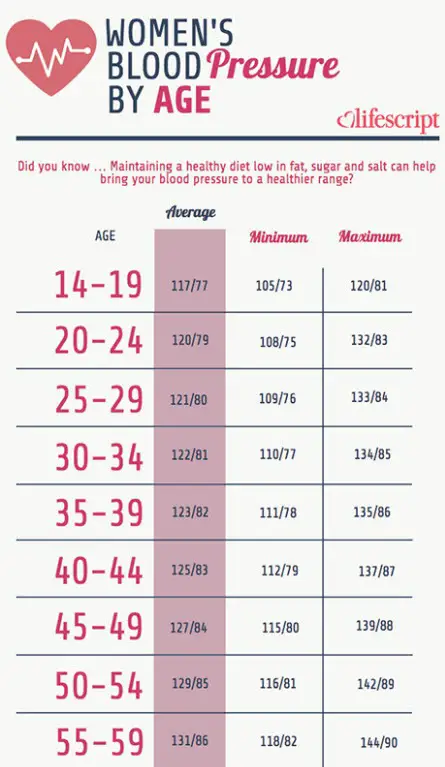

elevated blood pressure, from 120-129/less than 80 mm Hg.This category now forms two separate ranges: A blood pressure reading of 140/90 mm Hg now qualifies as stage II hypertension and not stage I, as it used to be. They also removed the “prehypertension” category between 120-139/80-89 mm Hg. Since 2017, the AHA has advised that people with high blood pressure should receive treatment at 130/80 mm Hg rather than 140/90 mm Hg.
#Normal blood pressure range female update
The overall guidelines for high blood pressure received an update in November 2017. Older 2003 guidelines state that for blood pressures above a figure of 115/75 mm Hg, every rise of 20/10 mm Hg doubles the risk of cardiovascular disease. However, blood pressure changes naturally for many reasons. The National Institutes of Health and the American Heart Association (AHA) cite normal blood pressure to be below 120 mm Hg systolic and 80 mm Hg diastolic. Blood pressure, however, cannot be created solely by a pumping heart. It also carries one of the defenses against tissue damage, the clotting platelets that prevent blood loss following injury.īut what exactly causes blood to exert pressure in the arteries? Part of the answer is simple - the heart creates blood pressure by forcing out blood when it contracts with every heartbeat. Just as important as providing oxygen and nutrients, the fresh blood that gets delivered is able to pick up the toxic waste products of metabolism, including the carbon dioxide we exhale with every breath and the toxins we clear through the liver and kidneys.īlood itself carries a number of other properties, including its temperature. It is an important force because oxygen and nutrients would not be pushed around the circulatory system to nourish tissues and organs without blood pressure.īlood pressure is also vital because it delivers white blood cells and antibodies for immunity and hormones such as insulin.

Blood pressure is the force that moves blood through the circulatory system.


 0 kommentar(er)
0 kommentar(er)
